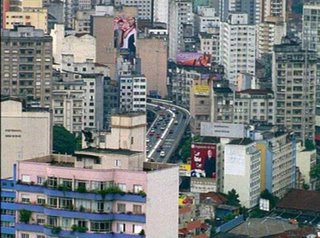
film still: Sylvia Kristel - Paris, 2003.
srpski
Sylvia Kristel – Paris is a documentary movie about a pop icon from the 70’s, Sylvia Kristel, a Dutch actress and model who became famous for her role in the soft-core movie Emmanuelle, one of the most successful French films ever. During a period of two years, Manon de Boer asked Kristel twice to talk about cities where she had lived. By separating image and sound, portrait and voice, the documentary introduces an element of doubt to the viewer, appealing to the collective memory, in which Kristel equals Emmanuelle.
"In most of my work, there’s an element of doubt in relation to interpretation. For instance in the film Sylvia Kristel – Paris, Kristel speaks twice, with an interval of one year, about the time that she lived in Paris. The two stories are different, but you can’t say that one of the two is true and the other false. "
"I want the viewers to question the stability of identity by introducing doubt, but also by separating sound, image and text. The different elements that construct a film or a work are put into dialogue with one another. Instead of creating a homogeneous whole with which the viewer can identify, the viewer is always held on a slight distance, which can create a critical space."
Manon de Boer
from the interview "Video Portrait" with G. Petrovic.
In a newspaper Danas, April 5th, 06.
___________________________________________________________
from the interview "Video Portrait" with G. Petrovic.
In a newspaper Danas, April 5th, 06.
___________________________________________________________

film still: Resonating Surfaces, 2005.
Resonating Surfaces is situated in the Parisian intellectual climate of the 70’s.Through personal memories of Suely Rolnik, a psychoanalyst from Brazil who has lived under the dictatorial regime of general Humberto Branco and moved to Paris afterwards, this film portrays an individual, a city and an attitude towards life. The construction of meaning in the film is built on diverse elements: image, sound, text and even voice. They all have separate significance, sometimes questioning each other, at other times totally detached.
In “Resonating Surfaces” the voice begins with a dying scream, and subsequently you hear a voice as sound/timbre without meaning, then it becomes a stream of incoherent words and, finally, a text. Without coinciding with the story of Rolnik this evolution in the voice exists as an echo of it. Thus, de Boer constructs a physical space for the voice, its physical presents and images it summons. Therefore, in that cluster of layers the voice, as a unique human phenomenon in which language and body meet together, emerges as a fourth layer.
based on the text: Voice, Manon de Boer 2007
Photo courtesy Jan Mot Gallery, Brussels, BE (www.janmot.com)